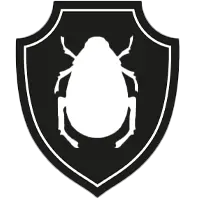Introduction
I understand your frustration. Wasps in the grass can be a significant problem. As a pest control specialist, I’ve seen first-hand how these pests can turn a tranquil yard into a hazard.
In this article, we’ll explore practical solutions to rid your lawn of wasps, delve into the importance of regular lawn care, and understand the risks and impacts of these insects.
By the end, you’ll be equipped with knowledge and strategies to reclaim your peaceful backyard. Don’t worry; we’re in this together.
How to get rid of wasps in the grass – 3 solutions
I can feel your anticipation. Let’s delve into the crux of the matter. Here, we’ll discuss three proven methods to help you eliminate wasps from your grass effectively. I’ll walk you through each, from natural methods to professional services.
Implementing natural repellents: Encouraging wasp predators and using plants that repel wasps.
Nature has its checks and balances. Certain creatures, like birds and spiders, prey on wasps. By creating a friendly environment for these predators, you can naturally curb the wasp population. Additionally, certain plants like wormwood, eucalyptus, and mint are known to repel wasps. Planting these around your lawn can help deter these pests.
DIY traps: How to effectively use homemade solutions
Homemade traps can be an economical and effective solution. A popular option is a sugar and water trap – the wasps are attracted to the sweet scent but find themselves unable to escape once inside the trap. Remember, always handle these traps with care to avoid stings.
Professional pest control: When to consider hiring an expert
Sometimes, the situation may escalate beyond your control. If wasp nests are numerous, or if you’re dealing with a particularly aggressive species, don’t hesitate to call in the professionals. They have the skills and equipment to handle these infestations safely and efficiently.
Great, now you’re equipped with three practical solutions. However, we cannot overlook the importance of prevention. This brings us to our next section, focusing on regular lawn care and how it helps control wasps. Stay tuned.
The importance of regular lawn care in wasp control
Let’s now pivot to preventive measures. Regular lawn care plays a significant role in preventing wasp infestations. By keeping your grass healthy, you’re not just beautifying your yard, but also warding off unwanted guests like wasps. Let’s look at two key aspects.
Routine lawn maintenance: How it helps prevent wasp infestations
Routine lawn maintenance goes a long way in discouraging wasps. Regular mowing, proper fertilization, and general cleanliness can deter wasps from making your lawn their home. Remember, wasps prefer undisturbed areas to build their nests. So, keeping your lawn tidy can significantly reduce the chances of a wasp infestation.
The role of proper irrigation: Avoiding conditions that attract wasps
Irrigation plays an important role too. Overwatering your lawn can create puddles, providing a water source for wasps, thus attracting them. Maintain a balanced watering schedule to keep your grass healthy while not inviting wasps.
I hope this makes it clear how preventive measures through lawn care can make a difference. In the next section, we’ll delve into understanding the risks and impacts of wasps in your yard. So, stay with me.
Risks and impacts of wasps in your yard
While we have discussed control and prevention, it’s crucial to understand why this is so important. This section will shed light on the potential risks and impacts associated with wasps in your yard.
Understanding wasp stings: Health risks and symptoms to look out for
Wasp stings can cause significant discomfort and pain. Some people might experience allergic reactions, leading to serious health complications like anaphylaxis. Look out for symptoms like swelling, redness, itching, and in severe cases, difficulty breathing, and seek immediate medical attention if these occur.
Negative impacts on lawn health and biodiversity
Wasps can adversely impact your lawn’s health and biodiversity. Their nests can damage grass and plants. Also, certain wasp species can disrupt the ecosystem balance by preying on beneficial insects.
By now, we’ve explored how to deal with wasps, preventive measures, and the risks they pose. With this knowledge, you can act effectively to maintain a safe and healthy lawn. As we move to the final section, we’ll recap what we’ve covered and discuss the balancing act between controlling wasps and maintaining lawn health. Stick with me till the end.
Conclusion
We’ve journeyed through understanding wasps in your grass, practical solutions to eliminate them, and the importance of routine lawn care in wasp control. We’ve also discussed the potential risks posed by these pests.
Dealing with wasps doesn’t mean declaring war on all insects. It’s about striking a balance, creating a safe, healthy environment for you and your lawn’s ecosystem.
Remember, knowledge is your greatest tool, and with this, you’re well-equipped to handle any wasp issues that may arise.

